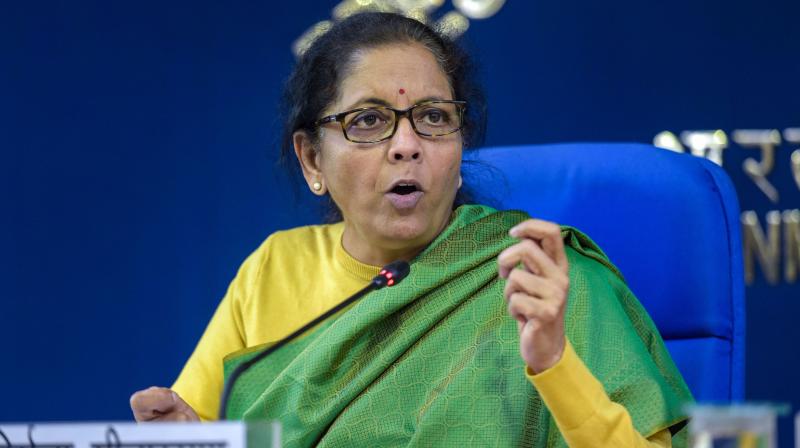Bharat Jhunjhunwala
The Finance Minister should increase the budget allocations for science and communications and for providing direct cash transfers to all citizens. The former will lay the foundations of our economic prowess, while the latter will engage our manpower in productive employment, put purchasing power in the hands of people, generate demand in the market and set in motion a fortuitous cycle of employment generation, production, creation of demand and yet more employment generation.
The year 2020-21 was abnormal hence I will give my suggestions for the coming budget on the basis of the figures for 2019-20. I have given all figures in approximate to keep the presentation simple. On the revenue side, my first suggestion is that the rates of Corporate Tax must be increased. The share of the Central Government in the collections from Corporate Tax was `3.2 lakh crore in 2019-20. This may be increased to `4 lakh crore. Indeed, there will be a tendency of Indian Corporates to shift their head offices to foreign countries in order to avoid paying high taxes. This should be dealt by amending the Double Tax Avoidance Agreements that we have entered into in the last two decades. Two, Income Tax rates must be increased. The share of the Central Government in collection from Income Tax was `2.8 lakh crore in 2019-20. This must be increased to `4 lakh crore in 2021-22. Indeed, this will lead to reduction in demand from the better-off sections but much greater demand will be created from the common man by the dropping of helicopter money as I propose below. Three, GST rates must be reduced. The share of the Central Government in GST collections was `6.1 lakh crore in 2019-20. This must be reduced to `4 lakh crore in 2021-22. This will lead to lower prices of goods and rev up demand. Four, customs duties must be increased three times. The share of the Central Government in customs duties collection was `0.6 lakh crore in 2019-20. This must be increased to `2 lakh crore in 2021-22. This will provide a big boost to domestic production by providing them protection from cheap imports. Five, Central Excise Duties must be increased by about 67 per cent. These are collected mainly on petroleum products. The Central Government collected `2.5 lakh crore in 2019-20 from these duties. This must be increased to `4 lakh crore in 2021-22. This increase will lead to higher price of petroleum products, reduced demand and lesser dependence on imports. That, in turn will lead to less pressure on us to export. Once again, the loss to the common man from higher price of petroleum products will be many times compensated by the helicopter money. Six, fiscal deficit may be reduced from the 7 per cent-plus expected in 2020-21 and restricted to 3.8 per cent of GDP as it was in 2019-20. That will provide `7.6 lakh crore from borrowings. The total budget of the Central Government was `27 lakh crore in 2019-20. This will increase to `30 lakh crore due to increased receipts from taxes suggested above after compensating for reduced receipts from GST.
On the expenditure side, the first suggestion is that the allocations for defense must be increased. The Central Government spent `4.4 lakh crore on defense in 2019-20. This must be increased to `7 lakh crore in 2021-22 in view of the China threat. Two, allocations for technology and communications must be increased manifold. The Central Government spent `0.3 lakh crore each on these heads in 2019-20. This must be increased five times for both the heads in 2021-22. These sectors will lay the foundations of our future technological progress and this must be done pronto. Three, allocation for Home Ministry at `1.4 lakh crore must be maintained since law and order is a fundamental requirement of a stable economy. Four, allocation for Health Ministry at `0.6 lakh crore must be maintained. However, there is a need to change the composition of expenditures within the Ministry. The expenditures on Central Government Health Services and similar schemes that provide health care to individuals must be scrapped entirely and the beneficiaries must be asked to pay in full for the services. The money saved may be diverted for research in control of Covid-19 pandemic. Five, expenditures on infrastructure must be temporarily reduced and expenditures on welfare schemes like Public Distribution System, MNREGA and education that provide welfare services to the people directly must be entirely scrapped. The Central Government spent `20 lakh crore on these Ministries in 2019-20. This must be reduced to `10 lakh crore in 2021-22. The abovementioned expenditures will require `22 lakh crore leaving a balance of `8 lakh crore out of the total revenue of `30 lakh crore. This money should be transferred as ‘helicopter money’ into the bank accounts of the 140 crore of our citizens providing `500 per person per month to all the people. This transfer will more than nullify the loss from the dismantling of the welfare schemes and increased burden from increase in petroleum prices. This transfer will immediately generate a huge demand for goods in the market. Coupled with the increase in import duties this will lead to higher domestic production. The expenditures on infrastructure such as highways can be restored after one or two years once the economy is back in motion.
We are in a crisis period. The Finance Minister should not increase expenditures on capital-intensive infrastructure schemes by borrowing ever larger amounts. That will impose a higher interest burden and throttle the economy. When domestic demand can be generated by increase in taxes and dropping of helicopter money; why try to do the same by borrowing and pushing us into a debt trap?
The writer is a former Professor of Economics at IIM Bangalore. Views are personal.
